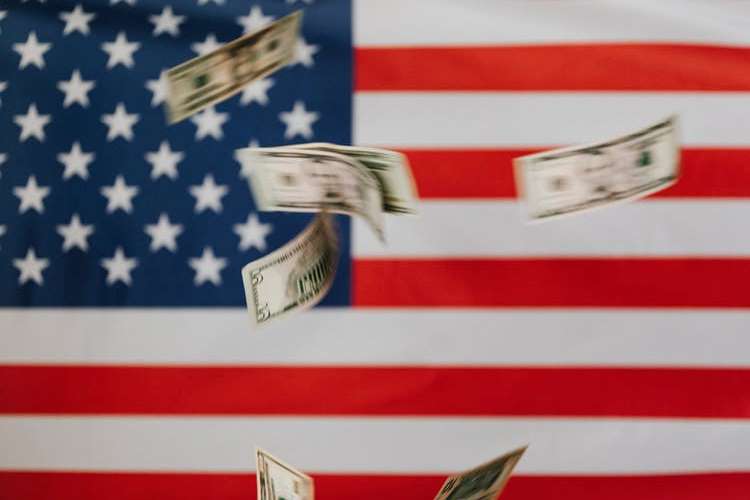Destabilizing Debt Ensures The Crisis Has Just Begun
The debt-disabled U.S. economy cannot withstand the surge in borrowing costs, and the reduction in money supply growth necessary to combat the record-high inflation suffered over the past few years.

Our beloved U.S. Treasury Secretary Janet Yellen said she believes the American economy remains strong and its banking system is resilient. That is, if you close your mind and overlook the recent bankruptcy of three financial institutions. Keep in mind this is the same person who assured us that we would never see another financial crisis in our lifetime. So, it is self-serving for her to deflect attention away from the economic meltdown that is on the horizon.
Yellen said at her recent press conference ahead of the spring IMF/World Bank meeting that “I’ve not really seen evidence at this stage suggesting a contraction in credit, although that is a possibility,” She doesn't see a contraction in credit?! The net percentage of banks that were already tightening credit standards prior to this latest banking crisis had surged to the recession level of 44.8 during Q1 of this year. That number surely has increased post the bank runs of the past few weeks.
She also said the “U.S. economy is obviously performing exceptionally well. I believe our banking system remains strong and resilient; it has solid capital and liquidity. So, I’m not anticipating a downturn in the economy, although of course that remains a risk." This proves she is more a feckless politician and hopeless carnival barker for the economy than a good steward of our nation's public debt.
Perhaps she'd be better off explaining why the Federal budget deficit has hit $1.1 trillion in just the first six months of fiscal 2023. Therefore, she should be spending her time making speeches that try to restrain the intractable and profligate spending in D.C. rather than making inane statements about the economy.
The truth is that the level and pace of debt accumulation just cannot withstand the most hawkish monetary policy in U.S. history. Here are the numbers that illustrate why the economy is about to collapse under the weight of all this debt and its surging service costs. In the three years leading up to
the Global Financial Crisis, from the start of 2005 thru the end of 2007, total debt in the U.S. (including public and private debt) jumped by 27%. Total debt increased by $7.3T, rising from $26.2T to $33.5T. And, total Non-financial debt as a percent of GDP reached 227%. During that tightening cycle, the total amount of rate hikes was 425bps, starting in April 2004 and ending in June 2006.
Compared to the situation today; during the years 2020-2022, Total U.S. debt jumped by 26%; or by $14.4T, while nominal debt soared from $54.5T to $ 68.9 T. And Total Non-financial debt as a percent of GDP is now at a greater 263%.
During the prelude to this latest banking crisis and to the precipice of the economic cliff, the Fed raised rates by 500bps in the time span of little over one year, from virtually 0% to 5%. And, at the same time, is reducing the base money supply by selling off its balance sheet. Hence, the Fed has raised rates at a quicker pace and to a greater degree than leading up to the GFC. And this hawkish policy is taking place in the context of an economy that is more overleveraged than ever before.
In the end, the Fed had no choice but to aggressively raise rates because of its ridiculous and irresponsibly delayed response to fighting the inflation it so eagerly sought to create in the first place.
This record increase and level of debt was issued in conjunction with an unprecedented $5 trillion increase in money printing in the two years following the Pandemic. It engendered a triumvirate of record-breaking asset bubbles: Bonds yielded nothing, home price to income rations shattered the old record set during the Housing Bubble in 2005, and the market cap of equities skyrocketed to reach a historic 200% of GDP.
Therefore, the Fed must bring down; bond, equity, and real estate prices to win the inflation battle. However, since these asset bubbles need a massive flow of new borrowing and money printing to keep them from bursting, a soft landing is not possible. Instead, a crash landing is the most probable outcome.
Do not expect our Treasury Secretary to give you the truth as to the current state of markets and the economy. The sad reality is that these boom/bust macroeconomic cycles will be growing more intense and happening more frequently over time due to the government’s abrogation of free markets. This is a new paradigm that requires us to invest accordingly.
More By This Author:
Soft Landing, To No Landing, To Crash LandingFour Reasons Why The January Rally Will Falter
Monetary Lags And The Acute Recession Of 2023
Michael Pento is the President and Founder of Pento Portfolio Strategies, produces the weekly podcast called " more



